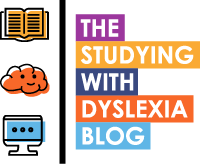Dyslexia is a complex learning difference that extends far beyond struggles with reading and writing. Drawing from both personal experience and professional insight, this blog delves into key aspects of dyslexia, providing educators with a deeper understanding of how it can impact the learning journey of their students.
The British Dyslexia Association defines dyslexia as encompassing weaknesses in phonological processing, verbal memory, and verbal processing. While these areas are central, it's essential to recognise that dyslexia can manifest in various other challenges, including organisation and auditory processing.
Phonological Processing: Individuals with dyslexia often struggle with phonological processing, making it difficult to manipulate sounds and discern differences between them. This can significantly impact reading and spelling abilities, as decoding and phonics are essential skills for literacy development.
Verbal Memory: Verbal memory involves retaining spoken information, encompassing both short-term and working memory. Weaknesses in verbal memory can make learning and retaining information challenging for students with dyslexia, requiring additional effort compared to their peers.
Verbal Processing: Verbal processing encompasses the retrieval and articulation of language-based information. For individuals with dyslexia, this may manifest as word-finding difficulties and challenges in expressing prior learning.
Beyond reading, writing, and spelling difficulties, dyslexia can present unexpected challenges in the classroom. Students may struggle with following instructions, completing tasks in an unconventional order, or multitasking. Verbal processing challenges can lead to frustration and intimidation when put on the spot to answer questions or read aloud.
Awareness and adjustments in teaching practices are crucial for supporting dyslexic students in the classroom. By providing accommodations and creating a supportive learning environment, educators can help students build confidence, express their understanding, and succeed academically.
Understanding the complexities of dyslexia is essential for educators striving to create inclusive learning environments. By acknowledging and addressing the diverse challenges associated with dyslexia, we can empower students to thrive and reach their full potential.
Consider reaching out to educational psychologists, special education teachers, or dyslexia specialists for further guidance and support in meeting the needs of dyslexic students in your classroom. Looking fine in school is not enough, and quite frankly the era of labelling dyslexic students as 'lazy' should surely be done by now.
If we continue sharing insights and experiences, we can collectively work towards creating a more inclusive and supportive educational experience for all learners. Let's carry on the conversation and advocate for equitable opportunities for students with dyslexia.
